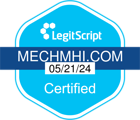Have you ever wondered why some people find it a bit harder to sit still or pay attention? Well, we’re here to explore that together. Welcome to Mech Mental Health Innovations, where we care about your well-being and want to help you understand something called ADHD.
ADHD stands for Attention Deficit Hyperactivity Disorder, and it’s something that some kids and even adults might have. It’s not a bad thing, just a different way our brains work. In this blog, we’ll dive into what ADHD is all about and how to recognize it in both kids and grown-ups. So, let’s get started on this journey of understanding!
Recognizing ADHD in Kids
- Trouble Paying Attention: In children, one big sign of ADHD is having trouble paying attention. They might get easily distracted, forget important stuff, or make careless mistakes in schoolwork.
- Fidgeting and Restlessness: Kids with ADHD often can’t sit still. They might wiggle in their seats, tap their feet, or bounce around when they’re supposed to be quiet.
- Impulsivity: This is a big word, but it means doing things without thinking first. Kids with ADHD might blurt out answers, interrupt others, or have trouble waiting their turn.
Recognizing ADHD in Adults
Guess what? Adults can have ADHD too! Here’s how you can spot it:
- Difficulty Staying Organized: Adults with ADHD might struggle to keep things tidy or forget important dates and appointments.
- Procrastination: They might wait until the last minute to finish tasks because it’s hard to start them.
- Trouble with Time Management: Managing time can be tricky. They might run late often or have trouble estimating how long things take.
Why It’s Important to Know
Knowing about ADHD is like having a treasure map. When we understand it, we can find ways to make things easier. Kids with ADHD can get special help at school, like extra time for tests. Adults can learn strategies to manage time and stay organized.
What to Do Next
If you or someone you know shows signs of ADHD, don’t worry! You’re not alone, and there’s help available. Talk to a grown-up or a doctor. They can help you figure out what to do next.
Remember, ADHD isn’t a bad thing; it’s just a different way our brains work. With the right support, we can still do awesome things and reach our goals.
Stay curious and keep learning because understanding ADHD is the first step to helping you or someone you care about shine even brighter! 🌟
We hope this blog helps you learn more about ADHD. If you have questions or need support, feel free to reach out. We’re here to help you on your journey to mental wellness.




